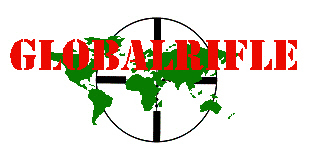|
DYNEEMA FRAGLIGHT MW201 100RM
1 roll 100 metres long
Grade A
32 kilos
ID No 97864 MW201/100
|
|
Characterization of Fraglight Non-Woven Felt and Simulation of FSP's
Impact in it
Authors: Sidney Chocron; A. Pintor; D. Cendon; C. Rosello; V. Sanchez- Galvez; UNIVERSIDAD POLITECNICA DE MADRID (SPAIN) ESCUELA TECNICA SUPERIOR DE INGENIEROS DE CAMINOS |
|
|
|
Abstract: The non-woven felt known
commercially as Dyneema Fraglight has an outstanding performances stopping fragments. The objective of this project is to
understand the reason for this performance by means of four different approaches: 1) Through mechanical characterization varying
size, direction, temperature and strain rate of specimens; 2) Ballistic characterization to obtain residual velocity curves
and high speed photography; 3) Numerical simulations of static and ballistic tests; 4) Analytical modeling. All the approaches
were covered, although the analytical work would need more work to complete. The mechanical characterization has shown that
the felt is orthotropic, very size dependent, that it weakens appreciably at 100 C and up to strain rates of 10(exp 3)S(exp
-1) its properties do not suffer a large modification. The ballistic tests show that the felt is actually better than what
the manufacturer claims (with the boundary conditions used in this project) . The numerical simulations confirm that the huge
deformation suffered by the felt during the ballistic impact is the key for its outstanding performance. An analytical simulation
of a non-homogenous, non-linear and under very high strains is extremely difficult from first principles, though a constitutive
equation for an elastic, orthotropic fibrous material, with arbitrary distribution of fibers has been developed. |
|
|
Title : Characterization of Fraglight Non-Woven Felt and Simulation
of FSP's Impact in it
Corporate Author : UNIVERSIDAD POLITECNICA DE MADRID (SPAIN) ESCUELA TECNICA
SUPERIOR DE INGENIEROS DE CAMINOS
Personal Author(s) : Chocron, Sidney ; Pintor, A. ; Cendon, D. ; Rosello,
C. ; Sanchez-Galvez, V.
Abstract : The non-woven
felt known commercially as Dyneema Fraglight has an outstanding performances stopping fragments. The objective of this project
is to understand the reason for this performance by means of four different approaches: 1) Through mechanical characterization
varying size, direction, temperature and strain rate of specimens; 2) Ballistic characterization to obtain residual velocity
curves and high speed photography; 3) Numerical simulations of static and ballistic tests; 4) Analytical modeling. All the
approaches were covered, although the analytical work would need more work to complete. The mechanical characterization has
shown that the felt is orthotropic, very size dependent, that it weakens appreciably at 100 C and up to strain rates of 10(exp
3)S(exp -1) its properties do not suffer a large modification. The ballistic tests show that the felt is actually better than
what the manufacturer claims (with the boundary conditions used in this project). The numerical simulations confirm that the
huge deformation suffered by the felt during the ballistic impact is the key for its outstanding performance. An analytical
simulation of a non-homogenous, non-linear and under very high strains is extremely difficult from first principles, though
a constitutive equation for an elastic, orthotropic fibrous material, with arbitrary distribution of fibers has been developed.
Descriptors : *FIBERS, *MECHANICAL PROPERTIES, *STRAIN RATE, *BODY
ARMOR, MATHEMATICAL MODELS, ARMY RESEARCH, DEFORMATION, NUMERICAL ANALYSIS, ELASTIC PROPERTIES, TEST METHODS, SPAIN, EQUATIONS,
FAILURE(MECHANICS), STATICS, BALLISTICS, FRAGMENTATION AMMUNITION, POLYETHYLENE, HIGH SPEED PHOTOGRAPHY, FIRST PRINCIPLES
CALCULATIONS.
|

